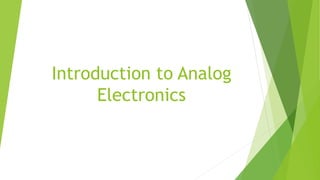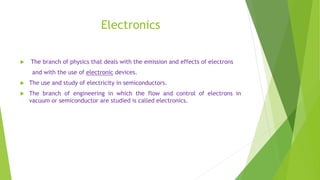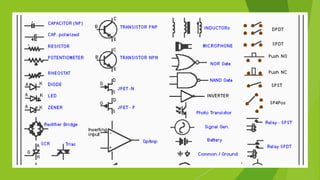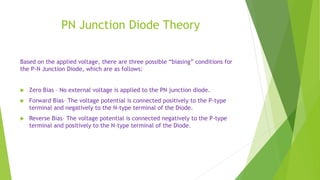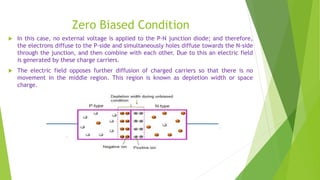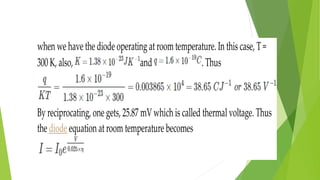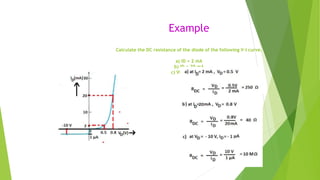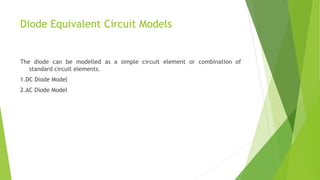This document provides an introduction to analog electronics and discusses key concepts related to semiconductors and diodes. It defines analog electronics as systems with continuously variable signals, as opposed to digital electronics which use discrete signals. Semiconductors are described as having electrical conductivity between conductors and insulators. The document discusses n-type and p-type semiconductors, the PN junction, and diode characteristics under forward and reverse bias. Diode models including the ideal diode model and equivalent circuit models are presented. Key diode parameters such as forward and reverse resistance are also summarized.
